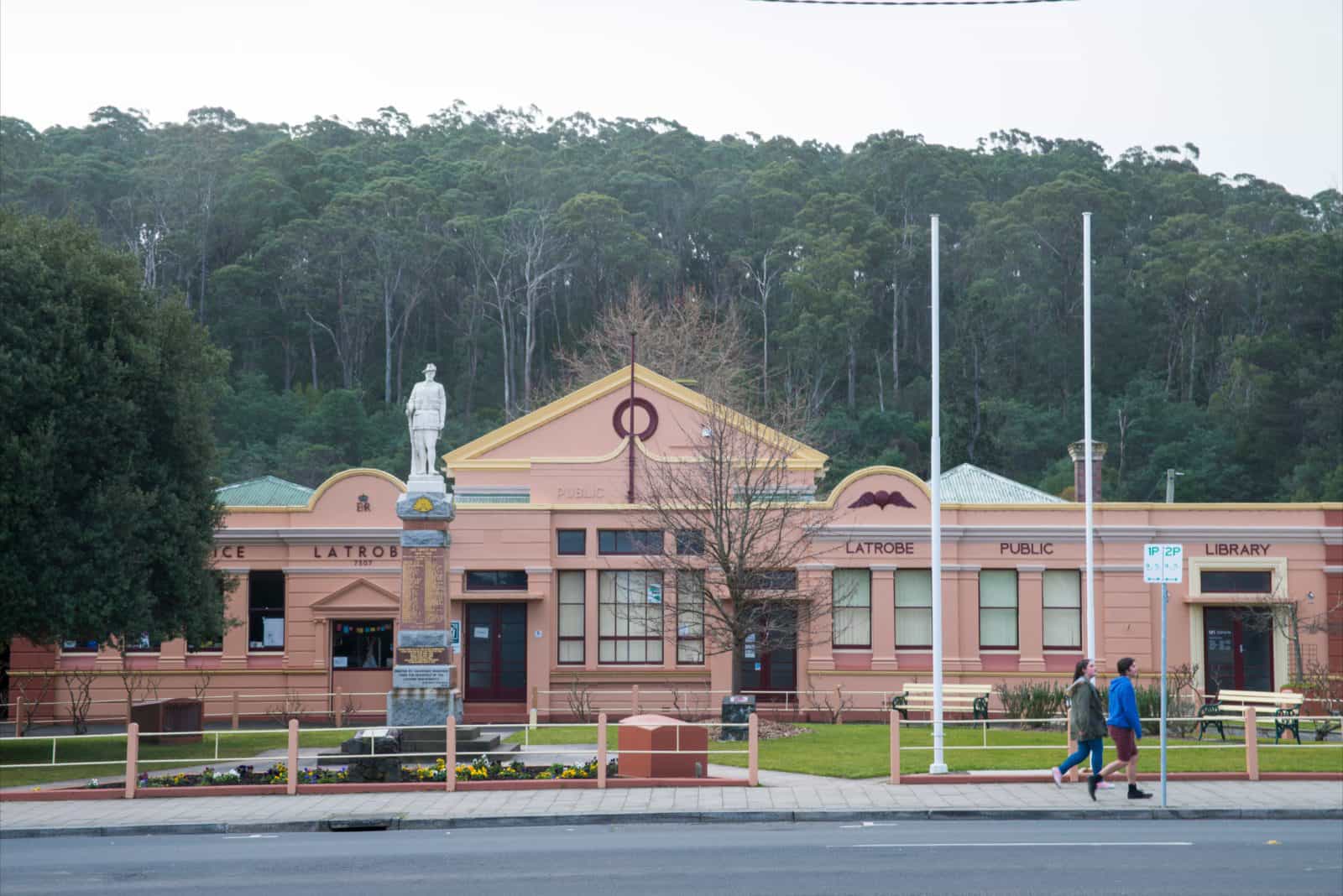
Follow the twists and turns of the Mersey River and you will soon reach Latrobe, the former port of the north-west coast. Once the bustling town of its time, it is now a much smaller neighbour to Devonport.
Latrobe’s population of 2,700 does not include its platypus inhabitants. The town is known as the platypus capital of the world, and you may be lucky enough to spot one of the flat-billed creatures in the Warrawee Reserve.
Latrobe comes to life with various festivals throughout the year, including the Chocolate Winterfest held at the House of Anvers Chocolate, Frogmore Fair, and Henley on the Mersey, held annually on Australia Day and featuring a family favourite – the ferret race.
Latrobe’s impressive list of achievements includes having the country’s oldest continuously playing brass band and richest wheel race, and being the birthplace of competitive wood chopping. The Australian Axeman’s Hall of Fame, on Bells Parade, is a tribute to this chopping heritage. Bells Parade is also the site of the former port and is now a favourite picnic spot for locals and visitors. It is particularly beautiful in autumn when the deciduous trees shed their leaves.
The town has 76 heritage-listed buildings, which can be explored on an historic walk down Gilbert Street. The former Wyndarra Lodge on the Bass Highway has been converted into a cafe and chocolate factory. Chocoholics beware, the House of Anvers has a tasting centre choc-full of sweet delicacies.
Latrobe was settled in 1826 by Edward Carr, and grew quickly because it was the first accessible crossing point of the Mersey River. The town was once the third largest in Tasmania, but declined when a railway was built between Launceston and Devonport.
The weather in Latrobe is similar to Devonport’s, averaging 21.5 degrees Celsius (70.5 degree Fahrenheit) in January and 13 degrees Celsius (55.5 degrees Fahrenheit) in June.
Latrobe is 11 kilometres (seven miles) south of Devonport, on the eastern bank of the Mersey River.
